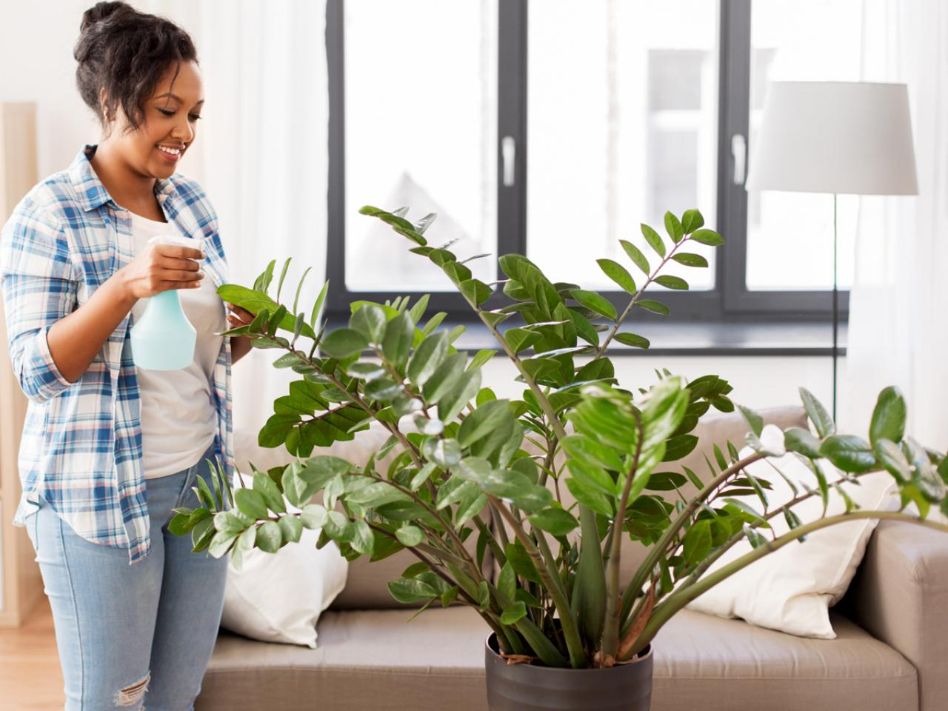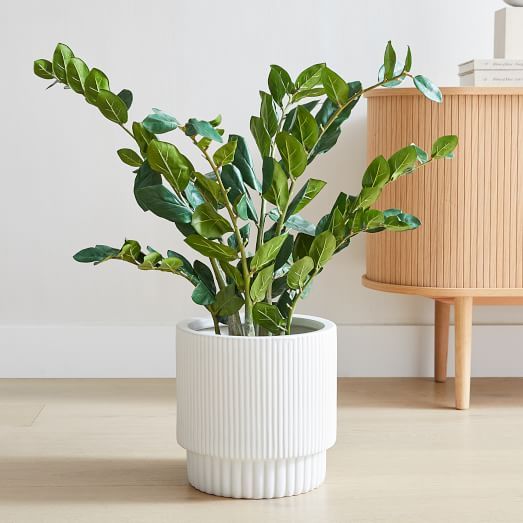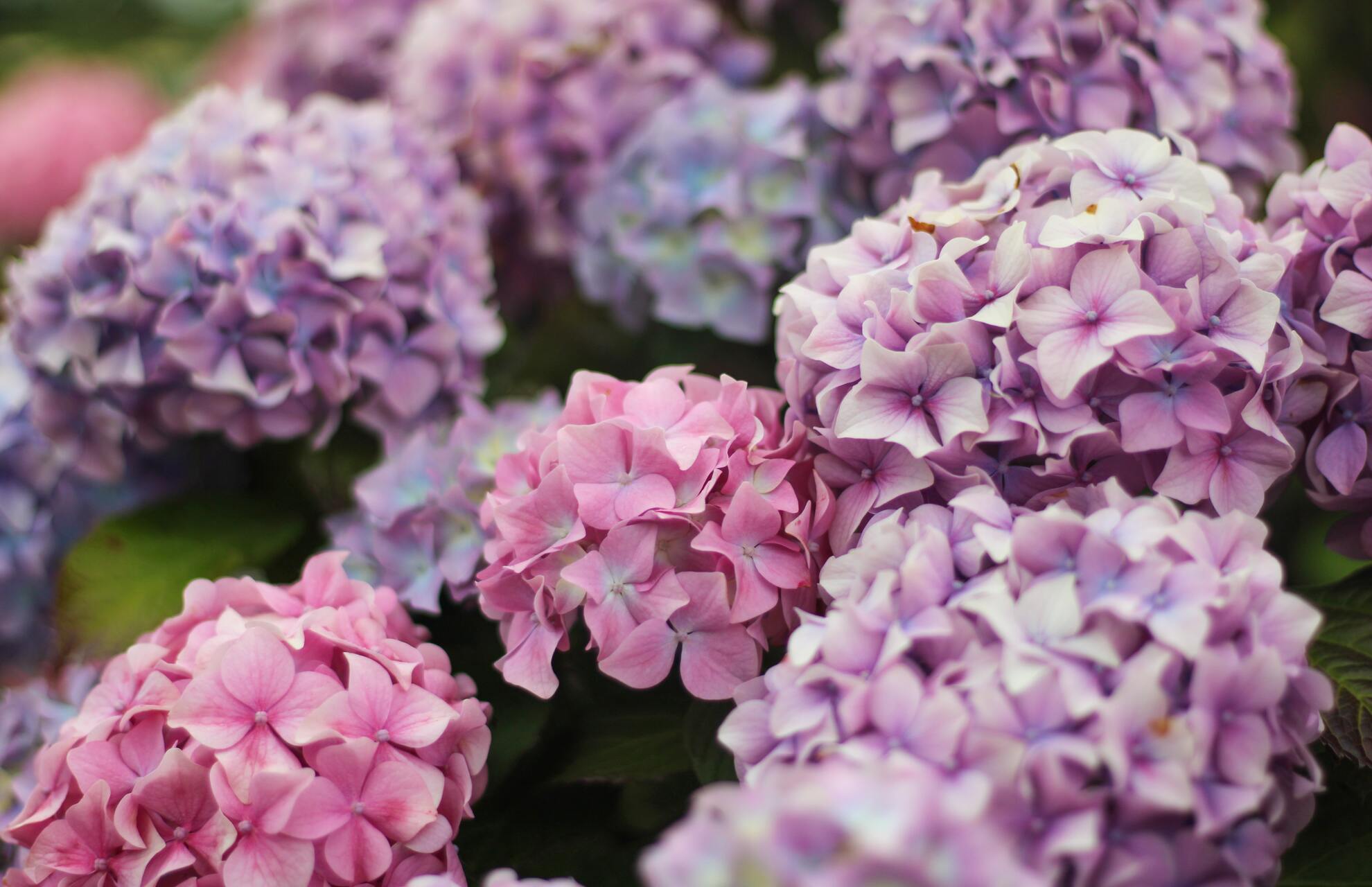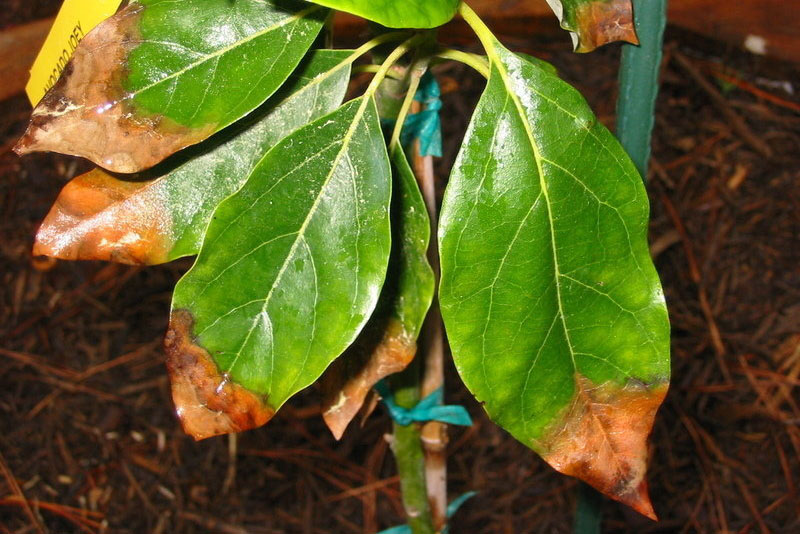In a short, the answer is yes. The ZZ plant is poisonous to cats, dogs, and people. However, it will not cause major harm to you or your pets. The majority of what you may have heard about the plant is exaggerated.
The notion that ZZ plants cause cancer began to circulate in the 2010s, although that information is equally incorrect. Although the ZZ plant is not poisonous, it should nevertheless be avoided.
The sap can irritate the skin, resulting in a rash. If one of your pets eats a ZZ plant, it will have digestive issues such as vomiting and diarrhea. All of this does not preclude you from having a ZZ plant in your house.
You may enjoy the lush leaves of this plant securely if you learn how to manage it. Please read this article to learn more about the ZZ plant.
- What is a ZZ Plant?
- Is The ZZ Plant Poisonous for Cats, Dogs, or Other Pets?
- How Dangerous Is The ZZ Plant?
- Why Are ZZ Plants Poisonous?
- What Happens If My Dog, Cat, Or Other Pets Are Exposed To It?
- Can ZZ Plant Be Around Cats?
- How To Keep Cats Safe From ZZ Plants?
- How to Treat ZZ Plant Exposure?
- Is There A Safe Way To Keep ZZ Plants Around?
- How Do I Safely Take Care Of A ZZ Plant?
- Conclusion
What is a ZZ Plant?
Zamioculcas zamiifolia, also known as ZZ plant, Zuzu plant, emerald palm, or eternity plant, is an easy-to-grow houseplant that spreads 2 to 3 feet in width and height when mature. Plants require little care and are drought-resistant.
They have glossy green foliage and rarely blossom. White blossoms surround an erect stem as they flower. These perennials, hardy in USDA zones 9 and 10, are members of the Araceae family and reproduce by division or leaf cutting.
Because it is so simple to care for, the ZZ plant is widely employed in commercial settings, according to the North Carolina State Extension Gardener. Plants may live without water for up to two months and can be maintained in the same way as other low-maintenance succulents and cacti that withstand indirect and low light.
In fact, even if the only light source is an overhead fluorescent lamp, the ZZ plant will flourish. Diseases and insects have little effect on the plant. Zamioculcas zamiifolia may be cultivated in a container outside as long as temperatures dip below 60 degrees Fahrenheit.
Is The ZZ Plant Poisonous for Cats, Dogs, or Other Pets?
According to Dr. Leonard Perry of the University of Vermont, ZZ plants produce calcium oxalate crystals, the same substances that cause kidney stones in people. When the sharp, microscopic crystals are eaten, they induce discomfort and swelling in the mouth and throat.
Typically, youngsters are turned off by the discomfort, which is comparable to chewing glass, and will refuse to eat it. The needle-like crystals embedded in the mouth of cats, produce vomiting, hypersalivation or drooling, and, in some cases, enlargement of the pharynx.
According to Dr. Tina A. Wismer of the ASPCA Animal Poison Center, blockage of the throat is unusual in cats, and most poisoning cases recover within 24 hours. If possible, clean the cat’s mouth with water or milk, but if the situation appears serious, contact a veterinarian.
Keep oxalate crystal-containing houseplants such as philodendron (Philodendron spp.), dumb cane (Dieffenbachia spp.), and peace lilies (Spathiphyllum spp.) out of reach of cats. When pruning the plant, pick up fallen leaves and discard cuttings.
You may be interested in:
- Are Bromeliads Toxic To Pet Cats
- Are Fiddle Leaf Figs Toxic to Pet Cats, Dogs, or Other Animals
- Are Air Plants Toxic to Pet Cats, Dogs, or Other Animals
- Are Venus Fly Traps Poisonous To Cats
- Are Peace Lilies Toxic to Cats, Dogs or Other Pets
How Dangerous Is The ZZ Plant?
The amount of damage and toxicity the Zamioculas Zamifolia causes your cat depends on the contact they have had with the plant – do they rub against it, bite it, or swallow it? The intensity of the response is also influenced by the duration of contact or, if any, the amount of plant consumed.
If your cat rubs up against the ZZ Plant, it will suffer from mild skin irritation. You will probably experience more pain from touching the plant than your cat does, though, because a cat’s fur coat practically covers its entire body, with the exception of its nose, ears, and paw pads.
However, your cat may experience more severe irritability, such as stinging eyes, if it touches the plant with any of these hairless areas.

Eating the ZZ Plant is more dangerous for cats though. Being curious animals, cats may nibble on the leaves, which can worry owners. Your cat will experience nausea, stomach discomfort, vomiting, and diarrhea if it swallows and consumes a piece of a ZZ Plant.
Depending on how much of the plant is consumed, these symptoms can range from mild stomach aches to prolonged diarrhea.
Dehydration is the primary health concern for cats who are ill or have diarrhea as a result of toxicity. As long as you make sure your cat has access to water, the plant’s toxins will be quickly flushed out of its system and there won’t be any serious problems. Your cat will quickly return to normal once the toxins have left its system.
There is also a minor risk that your cat’s throat could swell severely as part of the body’s immune response and their airways become blocked if they eat the plant. To have such a severe reaction, though, they typically need to have an overactive immune system or consume large amounts of food.
Plus, it’s highly unlikely that your cat will consume any of the plants. Biting the leaves can result in a burning sensation in the mouth, just as brushing against the plant can do the same to the skin.
This ought to be sufficient to sway your cat to spit it out and dissuade them from ingesting it. Even if your cat does ingest some, they are unlikely to retake seconds because the initial bite would have been agonizing enough!
As a result, although Zamioculas Zamifolia would be extremely toxic to cats if consumed in large quantities, in actuality, the effect is much less severe and won’t result in any significant harm.
Why Are ZZ Plants Poisonous?
The sap of this plant, like that of other Araceae relatives, includes calcium oxalate crystals.
These crystals are naturally produced by the plant as a sort of protection against predators and to control calcium in plant tissue. Calcium oxalate crystals are exceedingly tiny and pointy.
When the sap is ingested or exposed to bare skin, these sharp crystals create burning feelings.
This is a useful trait to have in the wild since any animal that comes across the ZZ plant and thinks it’s a nice lunch will swiftly learn its lesson in one bite.
That sounds really awful for the poor herbivore, but how does the toxicity of the ZZ plants affect you and your loved ones?
What Happens If My Dog, Cat, Or Other Pets Are Exposed To It?
If your cats, dogs, and other pets’ naked skin, mucous membranes, or eyes are exposed to this plant’s crystal-containing sap, they may experience brief irritation and discomfort.
If your pet tries to eat a ZZ plant, the sharp crystals will induce mouth pain, which will almost invariably end in them spitting up the plant.
Pets who eat this plant may exhibit the following symptoms:
- Sharp mouth pain
- Burning sensation of the mouth and throat
- Swelling of the mouth and throat
- Temporary hoarseness
- Stomach cramps
- Nausea
- Diarrhea
- Vomiting
These symptoms will manifest in pets within two hours of eating the ZZ plant, and most will recover within 24 hours. If you notice these symptoms in yourself, a loved one, or your pet, it’s imperative to know how to handle them.
Although serious conditions are unlikely to arise from exposure to the ZZ plant, they can still be uncomfortable. In order to limit the negative reactions, it is, therefore, best to find a solution as soon as possible.

If your cat starts displaying signs of exposure to ZZ plants, you should:
- Clear their mouths of any remaining plant matter.
- Make sure they get plenty of water.
If your cat consumes enough of the plant to upset its stomach and cause vomiting or diarrhea, drinking water will help them stay hydrated. After recognizing their symptoms, keep an eye on them for the first few hours to make sure their condition is getting better.
It’s a great time to give your cat a cool treat if they enjoy ice cubes or other pet-safe frozen foods. Their mouth will become more relaxed as a result of the ice, and any swelling and burning will be reduced. Furthermore, they deserve a treat because they had a long day.
Can ZZ Plant Be Around Cats?
Yes, but you must take precautions if you keep ZZ plants near cats. There is no restriction on you bringing a ZZ plant inside. There are some rules you should abide by, especially if you have cats with you, even though they won’t seriously harm you.
Therefore, be sure to locate your plant in a suitable area. You should hang the planter from the ceiling or find a high, awkward shelf. Many options are available for selection.
Of course, you can also place coffee or orange peels close to the planter to discourage your cat from going near it. These widely used pet deterrents should work. Try vinegar if none of these remedies work.
While the ZZ plant won’t freshen the air in your room, it will deter your cat or dog from entering. Remind yourself to always handle the plant with gloves on. You can get by with regular gardening gloves.
Following each use, they should be washed. Any tools you plan to use will be the same. It is crucial to clean any equipment that has come into contact with the plant, such as gardening shears, as the sap will remain on them. Both skin rashes and the likelihood of coming into contact with calcium oxalate are prevented.
How To Keep Cats Safe From ZZ Plants?
With these advantages, it is easy to see why ZZ Plants are still among the most popular houseplants. Furthermore, although ingesting large amounts of the plant can be extremely toxic, the likelihood of this is very low. The likelihood is that your cat will spit it out and avoid it in the future!
To keep your cat safe, you should take the appropriate measures if you already have a ZZ Plant in your home or plan to buy one.
Keep It Out Of Reach
Maintaining your ZZ Plant out of harm’s way is the easiest fix. There is really no downside to having a plant in your house if your cat cannot reach it to nibble on or brush against it. Cats, on the other hand, have a natural talent for climbing and jumping, which allows them to enter spaces that are difficult for humans to access.
Nevertheless, you can still prevent your cat from getting near the plant. This is the perfect location to keep your ZZ Plant if you have a room in your house that you don’t let your cat enter.
Keeping the plant on top of a high table or bookcase that you know your cat can’t climb also works because older, less active cats find it difficult to jump up onto high surfaces.
Use Scents As Deterrents
You can try using deterrents to encourage cats to stay away if keeping your Zamioculas Zamifolia away from them isn’t really possible. The smell is one of the most common methods used to keep cats away. Cats have a 15 times stronger sense of smell than humans do, so strong or overpowering scents can cause them to stay away.
Citrus is a well-known scent that cats detest. You can try putting orange peels on the shelf where your ZZ Plant is, and this will probably deter them. Just be sure to swap out the peels on a regular basis to prevent mold growth.
Another strong smell that repels cats is coffee. If you have a coffee maker, scatter old coffee grounds throughout the ground.
Vinegar can also be used as a cat repellant and many owners actually use vinegar to keep cats from scratching their furniture. Simply combine one part white vinegar with two parts water and pour the mixture into a spray bottle.
Your cat will stay away from the plant if you mist it with this spray. Lavender, cinnamon, mustard, and rosemary are a few other unpleasant scents for cats.
If you prefer not to use a homemade deterrent, cat deterrent sprays are also available at your neighborhood pet store and function in the same way.
Use Physical Deterrents
In order to prevent your cats from accessing your ZZ Plant, you can also use physical deterrents. For example, spike mats could be placed on the surface you keep your plant.
When your cat jumps on them, they won’t hurt her, but they will make her uncomfortable and significantly lessen the likelihood that she will want to get onto this surface and check out your houseplant.
Double-sided sticky tape is also an effective solution. Your cat won’t enjoy having the ZZ Plant’s sticky surface touch her paws, so she won’t go up to it.
Provide Other Stimulation
The reason cats nibble on things like your houseplants is usually that they are bored and don’t have enough other stimulation or attention to keep them occupied. Cats are curious animals.
If you give your cat a lot of toys to play with, a big scratching post or a large cat tree place to hide, and lots of cuddles and attention, you might discover that they are actually completely uninterested in your ZZ Plant after all.
This can be more difficult for busy people who spend the entire day away from home. But there are many motorized cat toys on the market right now that can be used even if you’re not home. Your cat can amuse itself in this manner while you’re away.
Choose A Non-toxic Alternative
Your ZZ Plant could be replaced with a non-toxic option if you want to be sure your cat is secure. But before buying any plant, make sure to do your research on it, or you might get a plant that is poisonous to cats instead!
One of the most popular houseplants is Spider Plants. Are cats toxic to spider plants? No, spider plants are among the best options available for pet parents and are completely safe for cats. Another excellent choice for novice gardeners is spider plants, which require little maintenance. Read: Are Spider Plants Toxic to Cats, Dogs or Other Pets?
What about ferns, are they poisonous to cats? Ferns are a common indoor plant that not only makes lovely hanging plants but are also relatively easy to grow and care for. The type of fern you’re referring to will determine whether it’s safe for cats or not. Read: Are Ferns Toxic To Cats?
The Boston Fern, for example, is an excellent choice for cat owners as it is safe for cats. Additionally, it’s one of the easiest ferns to maintain. Bird’s Nest and Stag Horn ferns are a couple of other ferns that are acceptable to cats.
Although the Ferm Palm is extremely toxic, the Asparagus Fern is only slightly toxic to cats. This demonstrates how critical it is to assess each plant’s toxicity!
Aspidistra, Phalaenopsis Orchis, Nerve Plants, Prayer Plants, and Parlor Palms are some additional cat-friendly substitutes for the ZZ Plant.
How to Treat ZZ Plant Exposure?
When a youngster consumes a portion of a ZZ plant, you must respond promptly by having them spit out the substance that remains in their mouth.
Remember to wash your hands after cleaning your mouth with a handkerchief. A youngster may be in pain or suffering right now. Cold drinks work wonderfully in these situations, so provide them some milk or ice cream.
If you believe your pet has chewed on a ZZ plant, inspect its mouth and remove any remaining parts. Then assist them in drinking fluids. Although not every pet enjoys them, cold treats can also be beneficial.
Keep a watch on your cat or dog in case they develop more serious symptoms such as vomiting or diarrhea. Your pet should be alright in a couple of hours, but don’t leave them alone, especially if you’re not sure how much of the plant they ate.

Is There A Safe Way To Keep ZZ Plants Around?
In the event that you come into contact with a ZZ plant, keep in mind that everything will be fine. There is a very slim chance that it will be significantly harmful. Which implies that you can coexist peacefully with the plant. To make your life with the ZZ plant easier, there are some specific recommendations.
Keep Out Of Reach Of Children And Pets
You must choose the ideal location for the ZZ plant if you want to live with one while keeping your children and pets safe.
The best thing you can do to keep your little people and furry friends safe is to keep them in an area that they cannot access. As your kids get older, make sure to inform them about the toxicity of the ZZ plant. Who knows—possibly they’ll grow to love plants as well.
Deter Pets From The Plant
If you don’t have a place to keep your plants where pets can’t get to them, you should think about some deterrents. Spread coffee grounds or orange peels around the plant; the aromas will deter pests. Pets can also be deterred by a vinegar solution spray, but it should only be used as a last resort due to the smell.
Wear Gloves If You Know You Are Going To Touch The Plant
Invest in a good pair of gardening gloves to keep your skin safe. If not each time you use them to work on the ZZ plant, make sure to wash the gloves frequently.
Wash Tools After Working With The Plant
You should regularly wash any tools you use on the plant, just like you would with gloves. It is crucial to clean any tools you use to tend to the plant, such as shovels, scissors, and other implements because it is likely that the substance will get on them.
Get A Non-toxic Plant
Finally, you can replace a ZZ plant with a non-toxic plant if you are concerned about the toxic effects of the ZZ plant. Numerous plants are non-toxic to both children and pets.
How Do I Safely Take Care Of A ZZ Plant?
If the ZZ plant doesn’t deter you and you decide to purchase one, the following advice will assist you. The ZZ plant requires very little maintenance, as previously mentioned. Since it doesn’t require as much water as other plants do, it needs soil that drains well.
Each month when you water it, you can fertilize it. When the soil is entirely dry, make sure to water. Although it prefers locations with indirect light, the plant does well in low-light settings.
If it likes the home you’ve given it, it may flower in the middle of summer and early fall – however, the plant is primarily a foliage-based plant.
Although it is very simple to do, we advise wearing gloves to protect your skin when propagating the ZZ plant. Their substantial rhizomes, which resemble potatoes, are where the plant gets its growth. Because these rhizomes store water, they don’t require constant watering.
You divide the rhizomes and replant them to propagate the ZZ plant. You may be interested in Can ZZ Plants Be Outside?
Conclusion
ZZ plants are hardy and attractive, but they are poisonous to cats. If you have a cat, it is advisable not to keep a ZZ plant in your house since your cat might become ill if he eats any of the plants. Remember that ZZ plants aren’t the only plants that are toxic to cats! Do your research and learn what additional plants to avoid in order to keep your cat healthy.
ZZ plants are without a doubt one of the greatest options for a houseplant, especially if you are just beginning your collection. ZZ plants not only look great in any setting, but they also help to filter the air.
Even though ZZ plants may go months without water, establishing a watering regimen will help them develop more quickly. However, there is no need to feel awful if you periodically forget about your ZZ plant.
They are tough and thrive on neglect. ZZ plants can thrive in any soil, don’t require fertilizer, and are like indirect sunshine. When consumed, they are definitely toxic. If any portion of the plant is unintentionally consumed, it can induce stomach issues and vomiting. If you want to keep little children and dogs safe, keep your ZZ plant out of reach of their tiny hands or paws.








